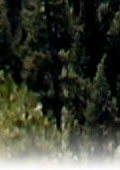Trinity County Community Chipper Program
Do you and your neighbors need help with getting rid of the piles of brush from your fuels reduction projects around your home? The RCD may be able to help you!!
The District recently received a grant from the North Coast Air Quality Management District to use a chipper instead of homeowners burning the branches, brush and small trees that have been cut on private property. The Trinity County RCD will provide a chipper and crew to dispose of these kinds of woody material for private landowners, who are doing their own defensible space work in the communities of Weaverville, Lewiston, and Hayfork.
Here is all you have to do – Get with your neighbors to work together so that the District crew will have at least 3 hours of chipping to do. Pick one person from the neighborhood to coordinate with the District – someone who can collect the Request Forms and return them to the District and help us schedule our visit to the neighborhood.
- Stack the material so that it is easy and safe to handle.
- Stack the material with the cut ends facing the road.
- Keep piles no higher than 4 feet.
- Piles need to be free of rocks, mud, poison oak and blackberries.
- Estimate the time needed to complete the chipping (cedar, pine & fir require 20 minutes for a 4 ft x 4 ft x 8 ft pile. Oak and manzanita take 30 minutes per pile).
- Keep track of the time that each landowner spends cutting and piling.
Chipping is a great alternative to burn piles. It is safer, reducing the chances of escaped fires turning into wildfires. Chipping decreases the amount of smoke in the air, and the chipped wood makes great mulch for those hard-to-maintain areas in your yard. This is a small grant and the District will respond to neighborhoods on a first-call first-served basis. So don’t wait too long. Get with your neighbors today and get on the RCD Community Chipper list before it is too late. For more information or to get copies of the Request Form, call 623-6004.
|


